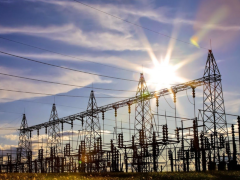Cummins products – from diesel and natural gas engines to hybrid and electric platforms, as well as powertrain components, controls, and related technologies – can greatly reduce emissions. These include oxides of nitrogen that contribute to ozone, particulate matter that impacts air quality issues, and greenhouse gases like CO2 (carbon dioxide) and CH4 (methane), which contribute to climate change.
Adopting cleaner technologies today, like near zero natural gas products and nearer to zero diesel, prior to widespread commercialisation of zero emission technologies for all markets, can make an immediate, positive impact.

As a technology company committed to meeting the world’s sustainability challenges, Cummins delivers a broad portfolio of power solutions. It is driving innovation in the areas of advanced diesel, natural gas, electrification, fuel cells, alternative fuels, and advanced energy solutions. In addition, Cummins continues to develop integrated engine system technologies and controls and collaborates with partners to integrate its products and services in the autonomous vehicles of the future.
Advancements in connectivity and automation drive efficiencies further allow for smarter operations and reduced maintenance for customers and end-users. Cummins’ technical leadership provides its customers with the correct solutions for their applications, ensuring they are equipped with the right technologies to get their jobs done.
“Cummins can and will lead in addressing climate, leveraging our expertise to develop sustainable solutions that enable our customers’ success, positively impact our communities, and protect our planet for future generations,” says President and CEO Jennifer Rumsey.
Destination Zero, Cummins’ strategy for decarbonisation, calls for developing and advancing low- and no-carbon platforms for those customers who are ready for them, while also working to reduce carbon emissions from the company’s more traditional products.
Cummins has brought to market battery and fuel cell electric platforms as well as electrolysers critical to producing low-carbon and green hydrogen. Green hydrogen is produced when the electrolysis of water to split hydrogen and oxygen is accomplished using renewable forms of power. The company is also bringing to market fuel-agnostic internal combustion engines offering a common architecture that can be optimised for different low-carbon fuels.
Contact rogerl@nowmedia.co.za













